20 Things You Need to Know About Ozempic and Weight Loss

Are you thinking about using Ozempic or another weight loss drug? Before you schedule an appointment with an MD or telemedicine doctor, educating yourself about the drug will give you a better idea of whether or not it's worth it. Here is everything you need to know about Ozempic—how it works and its benefits for weight loss, how much it costs, and the potential side effects.
How Ozempic Works

How exactly do weight loss drugs help you lose weight? "Ozempic enhances the release and action of insulin throughout the body, which helps with fat loss," explains Dr. Sue Decotiis, MD, NYC weight-loss doctor.
Ozempic Shuts Down Your Appetite, and You Feel Full Faster

"Weight loss drugs also have a tremendous effect on satiety, shutting down appetite so the patient feels very full after eating much less food," she explains. "Ozempic acts on receptors in the gut and brain that regulate appetite."
It Also Resets Your Rate for Fat Burning
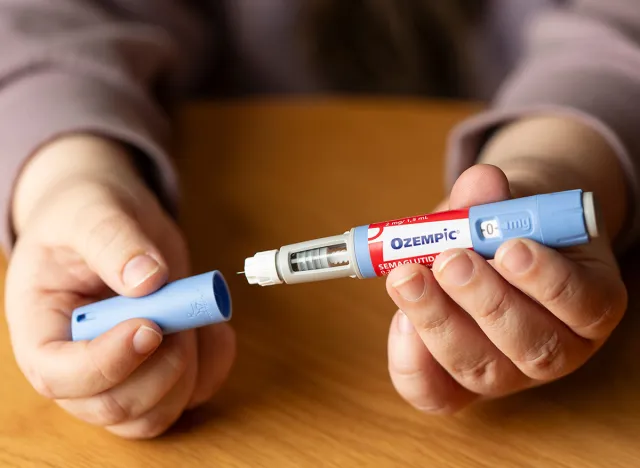
Ozempic also targets the centers in the brain that resets a person's set rate for fat, Dr. Decotiis says. "When your set rate is higher for fat, you tend to hold more weight. When people go on Ozempic it resets the amount of weight that your body wants to hold onto."
It Improves Insulin Function
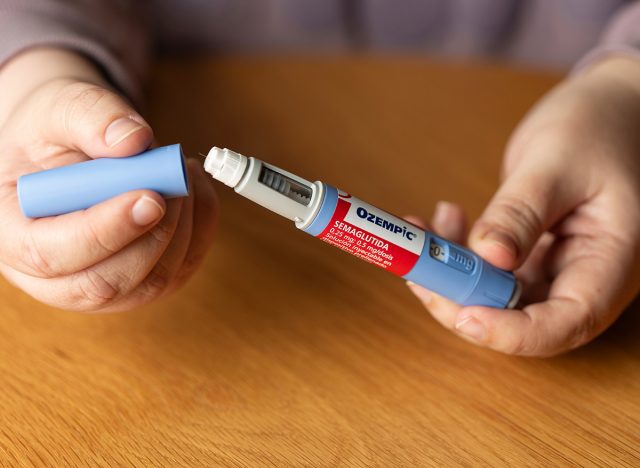
The main way Ozempic works is changing the way insulin works, explains Dr. Decotiis. "When insulin works well, you can burn fat, when it doesn't you gain weight," she says.
It Helps Regulate Hormones

"It helps regulate people's hormones that have changed due to aging, stress, etc., so that they can lose weight," she continues. "When people age their hormones change and it's harder for them to lose weight. Ozempic stimulate the hormones needed in the body for fat loss."
It Can Help with Self-Esteem and Rarely Leads to Depression

Dr. Decotiiis has seen a lot of positive effects on personality in her practice. "When people lose weight, they have better self-esteem, and they feel more confident in their own skin," she says. "I have people who were using sedatives for anxiety or depression, and then when they took these drugs, they felt better and didn't need them as much. My patient who had ADHD felt they had better focus and concentration. I have never had anyone who's gone into depression or has felt worse after taking these drugs. My advice is to know who the patient is and supervise them accordingly."
Ozempic Is Actually Only Approved for Those with Type 2 Diabetes
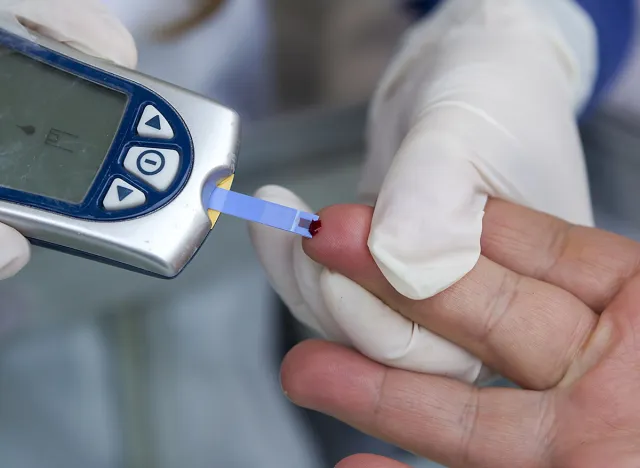
According to the National Library of Medicine Ozempic is approved to control blood sugar levels in adults with type 2 diabetes when other medications do not control the sugar levels well enough.
It Can Also Help with Heart Health

It is also used to reduce the risk of a stroke, heart attack, or death in adults who have type 2 diabetes along with heart and blood vessel disease. "It is not used to treat type 1 diabetes or diabetic ketoacidosis," they say.
Wegovy Is Approved for Weight Loss
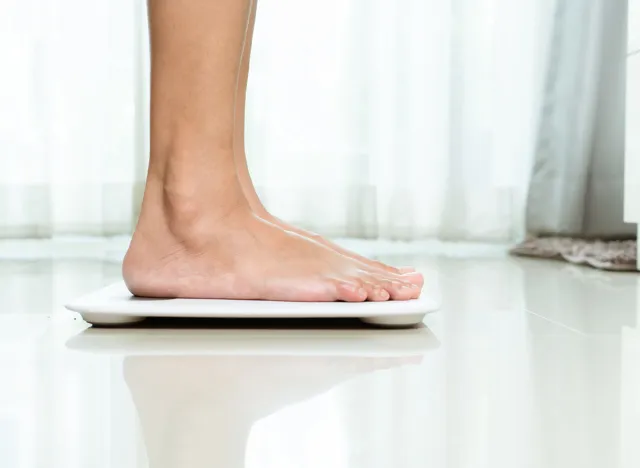
"Semaglutide injection (Wegovy) is used to reduce the risk of a stroke, heart attack, or death in adults who are overweight or obese along with heart and blood vessel disease," they say, adding that "used along with an individualized low-calorie, low-fat diet and exercise program" it can help with weight loss "in obese adults or overweight adults who may also have high blood pressure, diabetes, or high cholesterol" and in obese children 12 years of age or older.
It Comes in a Prefilled Pen
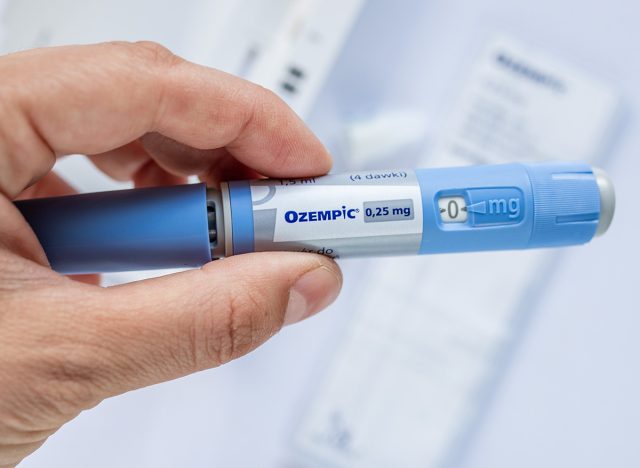
Semaglutide injection comes in a prefilled dosing pen injected once a week under the skin. "Use semaglutide injection on the same day each week at any time of day. You may change the day of the week that you use semaglutide as long as it has been 2 or more days (48 or more hours) since you used your last dose," they say.
RELATED: What Happens to Your Body When You Stop Taking Ozempic
You Usually Start on a Low Dosage and Work Your Way Up

Your doctor usually gets you started on a lower dosage, increasing it after four weeks. "Your doctor may increase your dose again after another four weeks based on your body's response to the medication," they say.
Most Common Side Effects

These are the most common side effects of Ozempic and Wegovy:
- nausea
- vomiting
- diarrhea
- abdominal pain
- constipation
- heartburn
- burping
More Serious Side Effect

There are also some potential serious side effects:
- ongoing pain that begins in the upper left or middle of the stomach but may spread to the back, with or without vomiting
- rash; itching; swelling of the eyes, face, mouth, tongue, or throat; or difficulty breathing or swallowing
- decreased urination; or swelling of legs, ankles, or feet
- vision changes
- fainting or dizziness
- pain in upper stomach; yellowing of skin or eyes; fever; or clay-colored stools (in those receiving semaglutide [Wegovy] for management of weight loss)
- rapid heartbeat
- dizziness, light-headedness, sweating, confusion or drowsiness, headache, blurred vision, slurred speech, shakiness, fast heartbeat, anxiety or irritability or mood changes, hunger, weakness, or feeling jittery
RELATED: 5 Foods That Maximize Weight Loss on GLP-1 Medicines, According to Coach
How Much Does Ozempic Cost?

Just because your doctor prescribes Ozempic doesn't mean insurance will cover it. The cost of Ozempic weighs heavily on whether your health insurance company believes that you qualify for the drug.
It's Very Expensive Without Insurance
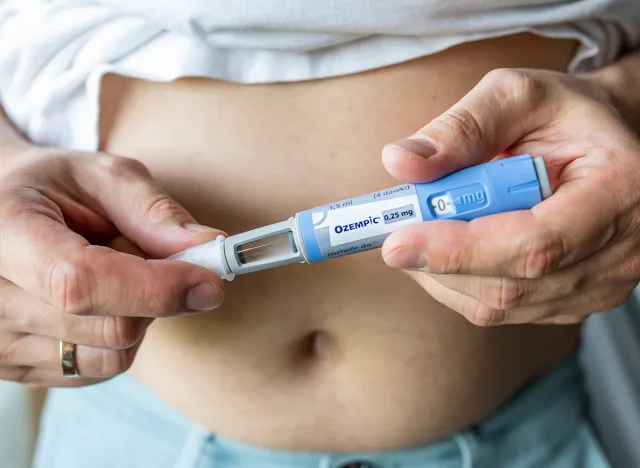
Ozempic is expensive if your insurance refuses to cover it. According to GoodRX, without insurance Ozempic can cost as little as $937.98 per month and as much as $1,014 per month.
How Much Does Ozempic Cost with Insurance

How much does it cost with insurance? Novo also offers a savings card, which enables people with private or commercial insurance to pay as little as $25 for a 1-month, 2-month, or 3-month supply of Ozempic for up to 24 months. However, many people pay more than that, with most insurance companies covering around 85 percent of the cost.
How Much Profit Are the Drug Companies Making?

According to a study published in JAMA Network Open Trusted Source, these drugs "can likely be manufactured for prices far below current prices, enabling wider access." Researchers from Yale University, King's College Hospital in London, and the nonprofit Doctors Without Borders concluded that if the producers were charging $0.89 to $4.73 a month and still making a profit. This is in contrast to the nearly $1,000 per month list price charged by Novo Nordisk for Ozempic in the US.
RELATED: 15 Things to Know Before Getting Ozempic for Weight Loss
What Is Rebound Weight Gain?
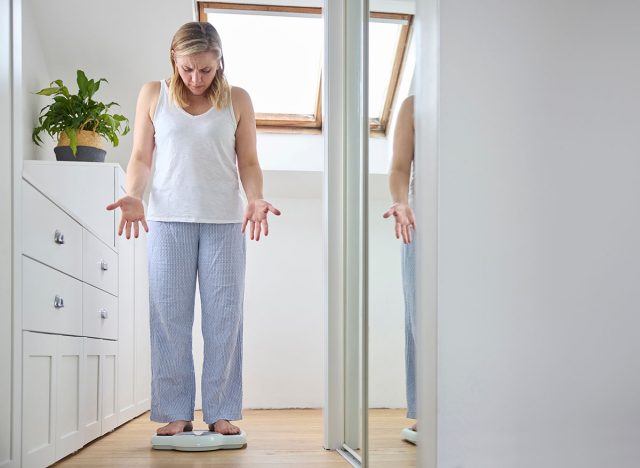
After you stop taking Ozempic, there is a good chance you may gain the weight back. One study found that one year after stopping the drug, participants regained two-thirds of their prior weight loss.
Ozempic Face

"Ozempic face" is one of the most popularized side effects of GLP-1 drugs. It's actually a side effect of rapidly losing weight and isn't a direct result of the drug. Losing weight fast can cause facial aging, including a hallowed look, wrinkles, and sunken eyes, explains Harvard Health.
RELATED: 15 Travel Habits That Help You Stay Fit and Lose Weight on the Go
Loose Skin and Excess Fat

"Ozempic body" and "Ozempic butt" are two more trending terms to describe the sagging skin left behind as a result of rapid weight loss. After dropping weight fast, loose skin, pockets of stubborn fat, and stretch marks can be left behind. Treatments, including surgery, like liposuction and tummy tucks, and less invasive options, like CoolSculpting and EmSculpt Neo, as well as lasers, can help treat these conditions.




